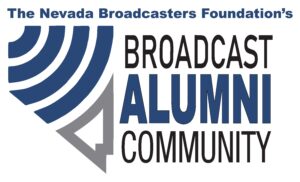
We are celebrating our birthday. Last week marked 15 years since the first short articles were published on this blog, with an official welcome being posted once we decided that we really could find something to regularly write about – that welcome posted 15 years ago Friday. Here we are, a decade and a half and almost 2,500 articles later, and there still is no shortage of topics to cover.
In the 15 years that the blog has been active, our audience has grown dramatically. In fact, I’m amazed by all the different groups of readers – broadcasters and employees of digital media companies, attorneys and members of the financial community, journalists, regulators, and even students and teachers. Because of all the encouragement that I have received, I’ve kept going, hopefully providing you all with some valuable information along the way. If you are interested, I recently discussed the blog with the LexBlog’s This Week in Legal Blogging (the video can be accessed here), telling many stories about unusual interactions with readers of our articles.
I want to thank those who have supported me in being able to bring this blog to you. My old firm, Davis Wright Tremaine LLP, helped me get this started (and graciously allowed me to take the blog with me when I moved to my current firm nine years ago). My current firm, Wilkinson Barker Knauer LLP, has also been very supportive, and I particularly want to thank several attorneys at the firm (especially David O’Connor and more recently Bob Primosch) who catch, on short notice, my typos and slips in analysis for articles that I often get around to finishing shortly before my publishing deadline. My colleague Adam Sandler has helped to regularly create some of the features that we now produce, like our weekly look at the previous week’s regulatory actions of interest to broadcasters, and our monthly look ahead at upcoming regulatory deadlines. Mitch Stabbe writes on trademark issues, some of our most popular articles, especially surrounding big cultural events. We’ve also published articles written by other colleagues, and I hope that they will continue with their valuable contributions in the future. Thanks also to my friendly competitors at other law firms that have taken up publishing blogs on communications and media legal issues since I launched mine – you all do a great job with your own take on the issues, and you inspire me to try to keep up with you all.
On average, those roughly 2,500 articles work out to an article once every other business day. There never seems to be any shortage of topics to write about. In fact, what is in short supply is time – as clients and life need to come first, and blogging gets worked into the schedule when it fits. But writing this blog has become an important part of my legal practice. It has, I think, helped make me a better lawyer, as it has given me an incentive to keep up to date on developments in the law and in business that affect broadcasters and other media companies. The articles, and the opportunities that the articles have opened for speaking and otherwise contributing to industry discussions, have introduced me to many people throughout the media world – including many who are pushing these developments. Interacting with those in the trenches provides even more to write about.
When we first started the blog, I think that I wasn’t sure how it would turn out. But, among the many goals that I set in my first post, was the following:
So some days, the blog may just report on FCC actions. Other days, we may link to interesting or provocative news stories that we see in the trade or popular press. But sometimes, we will tackle more fundamental issues. For instance, one of the first questions we’ll have to address is just what the broadcast industry is today. While we could limit the stories in this blog to just matters about the over-the-air broadcast industry, that narrow view would be far too limiting. Broadcasting is no longer an island unto itself. Instead, each day it becomes more and more clear that the world that traditional broadcasting inhabits is one that goes far beyond those narrow areas that the FCC has traditionally defined as a broadcast service. Thus, will be pointing out developments and legal decisions that impact not only traditional over-the-air radio and television stations, but also those in the myriad “new media” that are now so crucial to any understanding of the broadcast industry. Media “convergence,” which has for so long been nothing more than a buzz word thrown around to make it seem like we’re thinking about the future, is finally here, and cannot be ignored in a discussion of the broadcast industry.
Looking back, that may have been an ambitious goal, but it is one that I hope I have come close to fulfilling. In fact, in the last month, with articles that we published on low power FM, webcasting royalty rates, interactive music service royalties, video programing accessibility, Congressional efforts to support local news production, Section 230 reform, Facebook and broadcaster’s treatment of candidate-supplied content, and the First Amendment’s role in broadcast and online regulation, it is clear that the initial vision of a broadcasting industry that has expanded far beyond its traditional over-the-air bounds was not just the first question that we would address, but it is one that we address every month.
Most importantly, thanks to all our readers. Keep reading, tell your friends, let me know how I can help you, and we’ll see what happens in the future of the Broadcast Law Blog!
Courtesy Broadcast Law Blog


